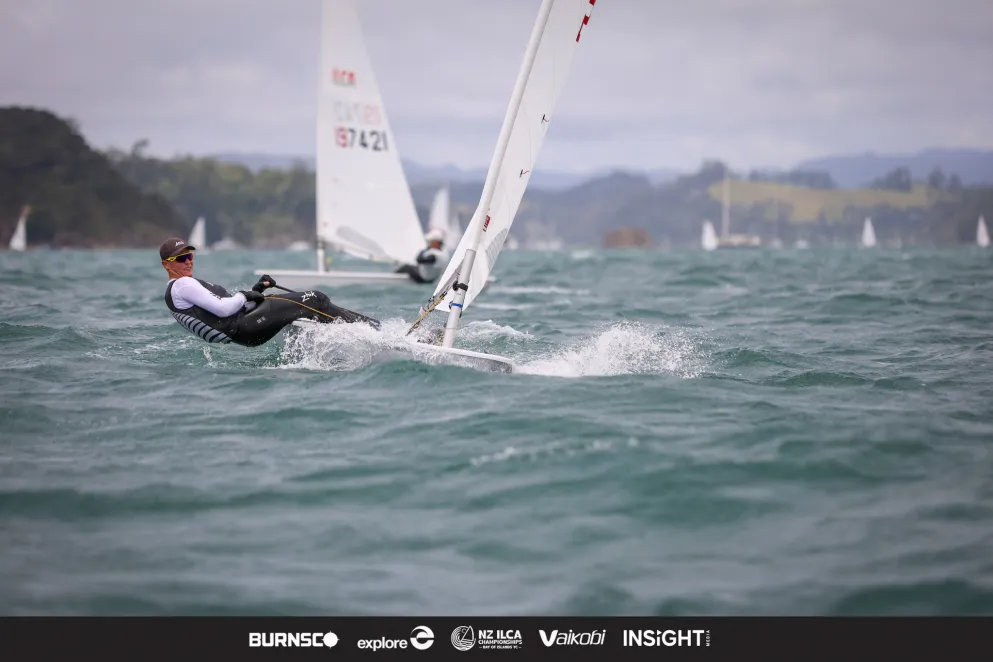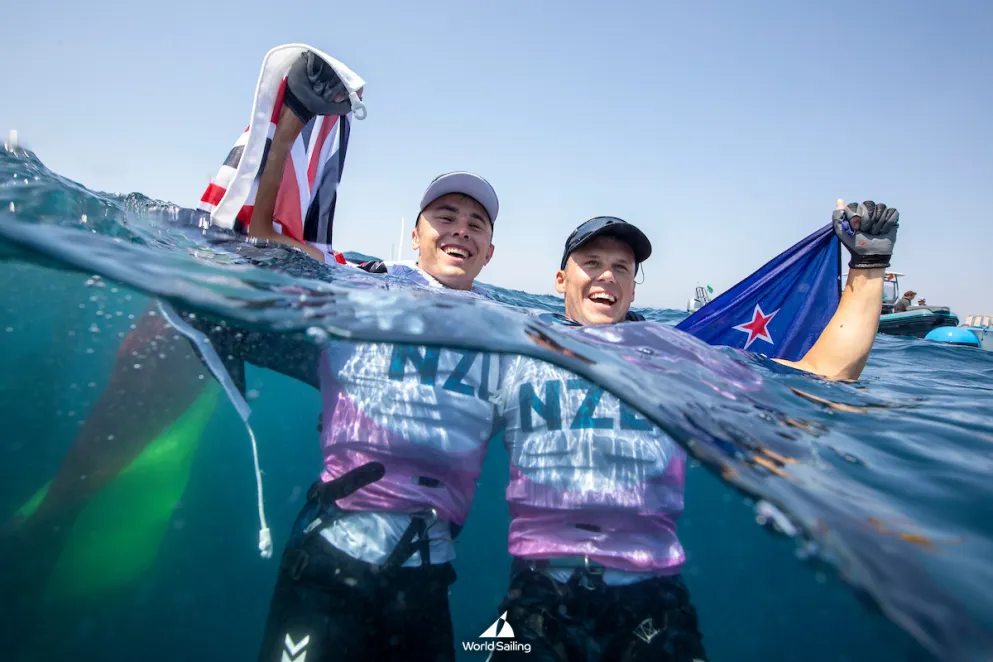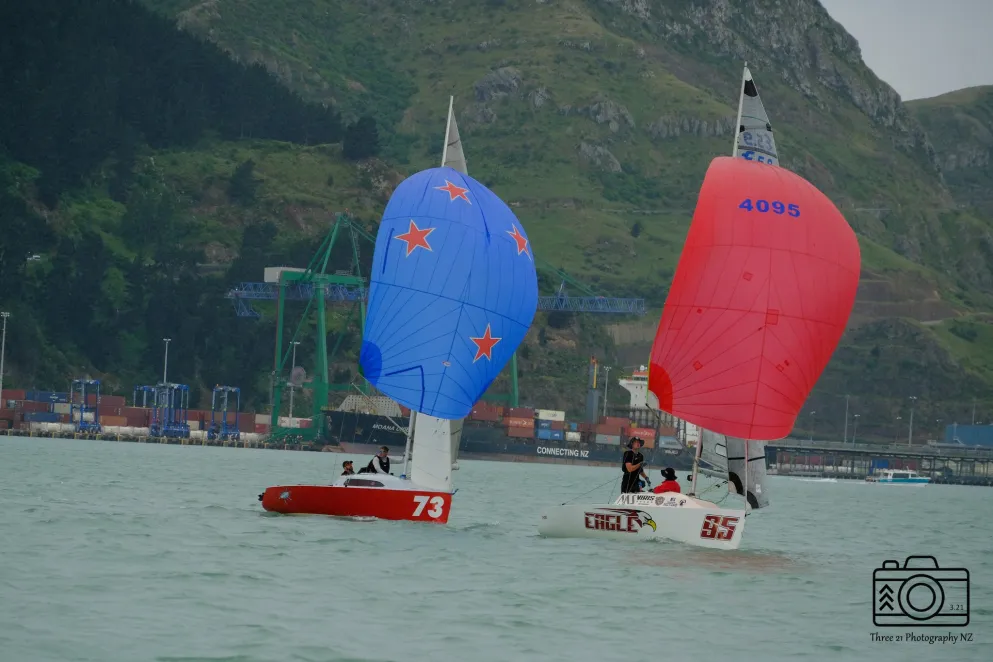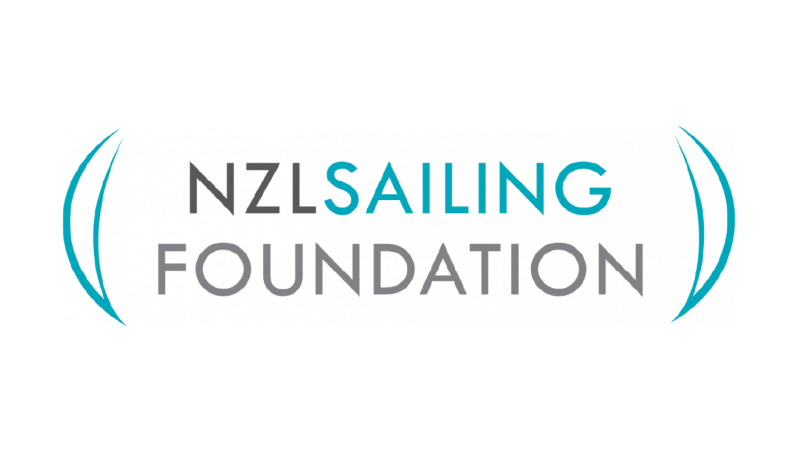Disability Accessible Tallship on World Circumnavigation
Rolling over in the sun, I turn and ask Andy if he was nervous about laying aloft. A few seconds passes, before his lopsided, sunny grin breaks through, and he shakes his head erratically: "Nup." His father, leaning against a pin rail and backlit by the blue Tasman waters, ruefully admits "I've never liked heights. But it was a real moment."
We are on board the Lord Nelson, a square rigged sail training ship operated by the Jubilee Sailing Trust. The JST is a British based charity that strives to promote sailing as an activity open to everyone, regardless of individual's physical capacity. Andy, Allen and myself have all signed up as voyage crew for one leg of Nellie world circumnavigation - and we are all enjoying ourselves immensely.
A few days prior, Andy had been one of three wheelchair users who chose to make an 'assisted climb'. He went aloft - wheelchair and all - in a harness designed to be hoisted by his fellow crew members. Andy, who grew up an active and sportive child, had not believed that climbing the rigging of a tallship was within the range of his possible activities - until he came aboard. Progressive MS has sapped his physical strength, and he relies on the fulltime care of his parents - Allen and Anne. However, at sea, the Woodside family are crew, standing watch, helming, taking time off ashore, learning lines, cleaning and working in the galley. For what Andy cannot do, the rest of his watch cheerfully steps in, and takes up the slack. In turn, Andy has demonstrated himself as a particularly astute and keen helmsman.
His parents are immensely proud - both of their sons achievement, and that his achievement had been made possible through the support and kindness of twenty or so other crew members; "complete strangers! All focused on, and so happy for, our son."
Andy is just one of several individuals who make up the complement of the Lord Nelson's crew. Up to half of the voyage crew of 38 people may be physically disabled, and the ship can accommodate 8 wheelchair users at any one time. Yet though the Lord Nelson is famed as one of two tall ships specifically designed with wheelchair users in mind, its mission is both broader and more grounded than this characterisation may indicate.
"It's not about getting disabled people to sail, but to provide care and compassion for the less abled." Kay Jaumees muses. At 79, Kay is one our oldest crew members on board, and she brings with her a lifetime's worth of nautical expertise. Would she, I press, consider arthritis, loss of eyesight, physical frailty and general advancing age, all part of a spectrum of lessening physical ability? She pins me to my seat with a sharp look that makes me squirm. "Of course. The opportunities become limited as you age. It's a shame, because old age is a growth industry."
However, whilst the Lord Nelson strives to cater to many, prospective applicants are advised that it cannot cater to all. At present, the Lord Nelson cannot cater to electric wheelchair users - though preliminary experiments in that direction are underway. It cannot cater to those with severe cognitive impairments that render them incapable of assessing risk during routine ship activities. Other individuals that require specific care - outside of what is extended to the crew as standard - are advised to discuss their particularities with the ships office, in advance of their voyage. Individuals with visual impairments will find Nellie equipped with a talking compass, enabling them to take their fair share of helming. Those with hearing difficulties can request a vibrating pad that will work to wake them in the event of general or specific alarms.
At its foundations, the Lord Nelson operates not as a ship that categorises crews as disabled or abled, but as a contemporary tallship that actively strives to provide the experience of square rigger sailing to as many people as it can safely and consistently achieve. Further, it is constantly pushing its own definitions of competency, ability and what it means to be a sailor, at roughly the same rate that its varied crew encounter, and overcome, the challenges found at sea.
So when crew are welcomed aboard, they come to Nellie with the understanding that - sitting or standing - we are all subject to the human condition. For each of us, this may mean a different thing: some will be terribly anxious about climbing, whilst others will find the interrupted sleep patterns and close quarters quite an adjustment. Seasickness - though not particularly prevalent on the voyage from Wellington to Nelson - is a universal leveller, and can strike regardless of your age, gender, able-bodied capacity or sea miles traversed. However, what truly set my time apart on the Lord Nelson was the absolute joy that all crew - professional and voluntary, able bodied and physically challenged - took to their time at sea.
The Lord Nelson is currently completing her voyage passages around New Zealand, before she heads east across the Southern Ocean to Argentina. She will be the first wheelchair accessible tallship to round the Horn - and she is looking for crew. Interested individuals are advised to check out the Jubilee Sailing Trust at jst.org.uk















